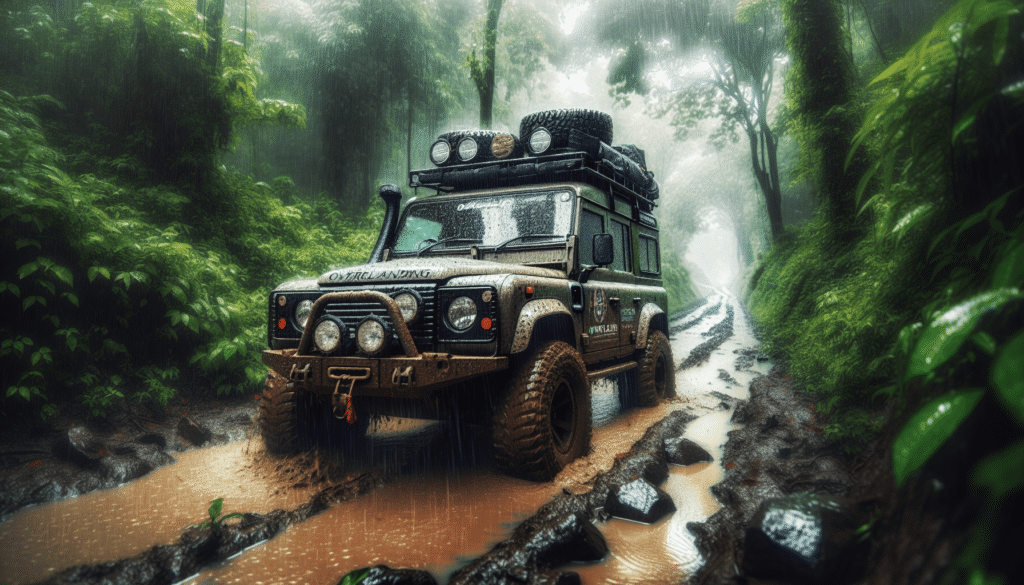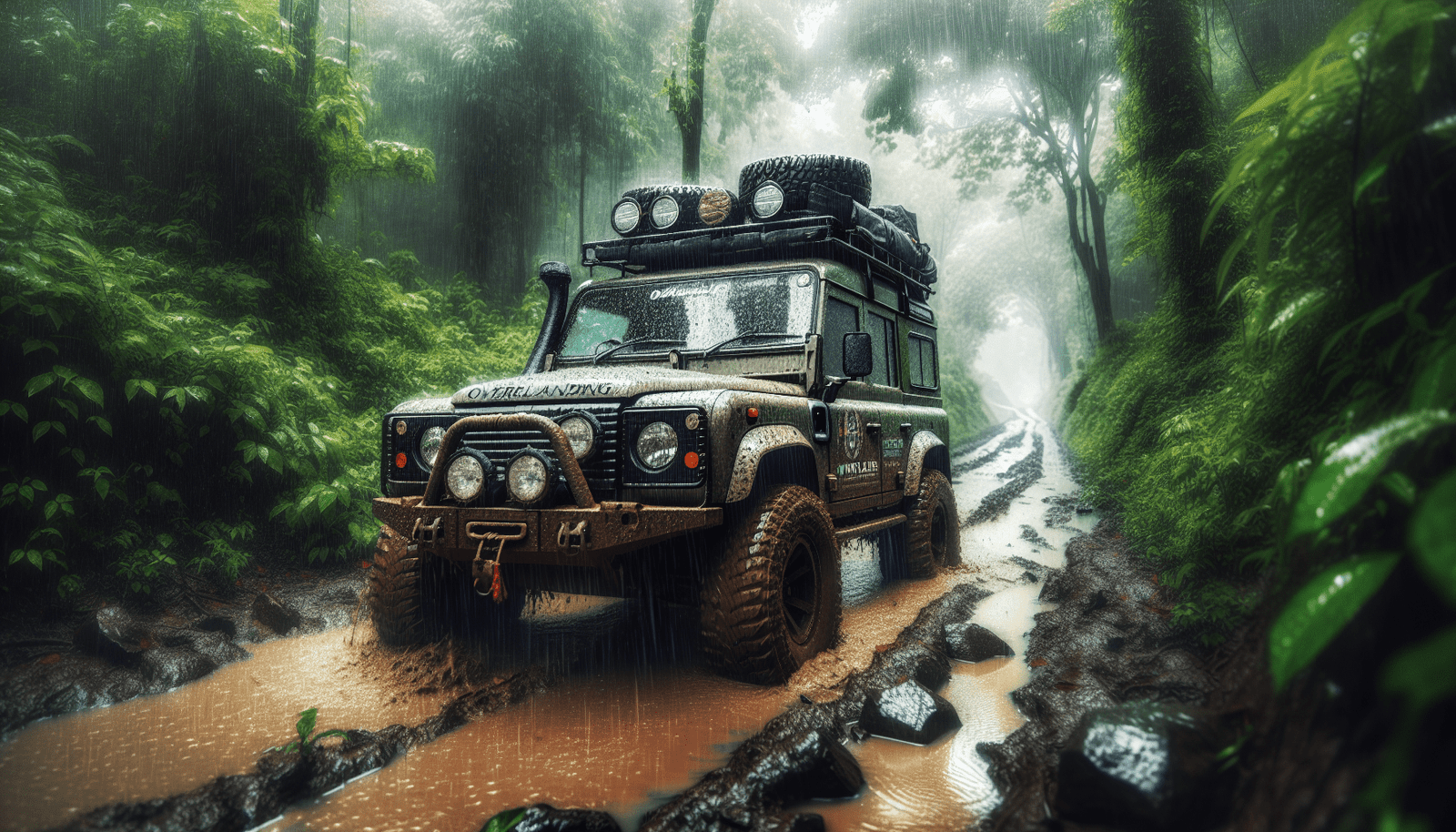How do you prepare for overlanding in regions with heavy rainfall? It’s a crucial question to consider when planning your adventures, especially if you’re looking forward to exploring areas known for their wet weather. Preparing properly can make the difference between a challenging experience and an enjoyable journey.
Understanding the Challenges of Heavy Rainfall
When it comes to overlanding in regions with heavy rainfall, it’s vital to understand the unique challenges you’ll face. Heavy rain can affect everything from road conditions to your camping setup.
Potential Hazards
Driving on muddy or flooded roads can be risky. Reduced visibility, slippery surfaces, and washed-out paths are all situations you might encounter. It’s also important to recognize that rivers can swell quickly with rainfall, which may limit your options for crossing or camping.
Impact on Equipment
The elements take a toll on your gear as well. Wet conditions can damage tents, clothing, and electronics if they are not adequately protected. Having the right equipment is essential for ensuring a safe and comfortable experience.
Essential Gear for Wet Conditions
Being prepared means equipping yourself with the right tools and supplies to handle the rain. Here’s a breakdown of essential items you should consider.
Waterproof Tents and Tarps
Invest in a high-quality waterproof tent that can withstand heavy rains. Look for features like sealed seams and a rainfly for added protection. Tarps can also provide additional shelter and can be set up to create a dry area for cooking or relaxing.
Rain Gear
Having appropriate clothing is crucial. Opt for breathable, waterproof jackets, pants, and footwear to keep your body dry while you navigate through wet conditions. Look for gear designed specifically for outdoor activities, which offers better mobility and comfort.
Recovery Gear
In case your vehicle gets stuck in muddy conditions, having recovery gear is non-negotiable. This includes items like a winch, recovery boards, a shovel, and straps. These can help you get your vehicle out of tricky situations.
Water Filtration Systems
In rainy regions, water sources might not be as clean as they seem. A portable water filtration system can be a lifesaver, allowing you to drink safely from streams or rivers. Make sure to have extra purification tablets as a backup.
First Aid Kits
Weather conditions can lead to slips and falls. A well-stocked first aid kit will help you handle any minor injuries and prevent them from ruining your adventure. Include band-aids, antiseptic wipes, and pain relievers, among other essentials.

Planning Your Route
Proper route planning is critical in avoiding flooded roads and making adjustments based on weather conditions.
Checking Weather Forecasts
Before setting out, always review the weather forecasts for the areas you’ll be traveling through. Apps and websites can provide real-time updates that can help you avoid severe weather.
Alternative Routes
Be flexible with your route. Heavy rainfall might make some roads impassable, so having a backup plan is essential. Consider alternative paths that may add time to your journey but ensure safety.
Utilizing Local Knowledge
Speaking with locals or checking online forums can provide insights into which roads tend to be problematic during heavy rainfall. Local knowledge can be invaluable and can make your planning much easier.
Setting Up Camp in the Rain
Setting up your camp in rainy conditions requires a bit of strategy and forethought. Here’s how to keep everything dry and cozy.
Choosing a Campsite
Look for elevated ground to set up your tent, as this helps prevent water from pooling underneath. Avoid low-lying areas and spots near rivers that could flood.
Tent Set-Up
When setting up your tent, position it so that the opening faces away from the prevailing wind. This will help prevent water from blowing inside. You can also dig a small trench around your tent to channel water away.
Create a Dry Space
Using tarps, you can create a dry area adjacent to your tent. This can be used for cooking, storing gear, or simply hanging out. Make sure to secure the tarps so they won’t fly away in the wind.

Staying Safe on Rainy Roads
Driving in rainy conditions requires extra caution. Always prioritize safety so that your adventure remains enjoyable.
Slow Down and Maintain Distance
Reducing your speed is crucial when driving on wet surfaces. Moreover, allow more distance between your vehicle and those ahead of you to give yourself plenty of time to react to sudden stops or obstacles.
Use Headlights Wisely
Always use your headlights in rainy conditions, even during the day. This increases your visibility to other drivers and helps you see the road more clearly.
Avoid Puddles
If you encounter puddles, be cautious. What appears shallow might be much deeper, leaving you stuck or damaging your vehicle. If you can’t avoid it, proceed slowly and steadily.
Maintaining Vehicle Performance
Your vehicle’s performance plays a significant role in your ability to navigate rainy areas successfully.
Tire Conditions
Inspect your tires before hitting the road. Ensure they have adequate tread and are properly inflated. All-terrain tires are often beneficial for overlanding and can provide better grip in muddy conditions.
Fluid Levels
Check your fluid levels, including oil, brake fluid, and coolant, before you set out. Rainy conditions can put extra strain on your vehicle, and you’ll want to ensure it’s running optimally.
Engine Protection
Consider installing a snorkel if you anticipate driving through significant water. This modification can help prevent water from entering your engine and allows for better air intake.
Food and Cooking in the Rain
When overlanding in wet weather, cooking can become somewhat of a challenge. However, with the right preparation, you can make it work.
Compact Cooking Gear
Using compact, lightweight cooking gear is ideal in rainy conditions. Look for gear that can fit easily into your vehicle yet is durable enough to withstand rough weather.
Menu Planning
Plan meals that are simple to prepare and require minimal cleanup. Dishes that can be made in one pot are excellent choices. Preparing meals at home and packing them can save time and energy during your trip.
Setting Up a Cooking Space
Set up your cooking gear under a tarp to keep it dry. Ensure that your cooking area is not near a location where water can collect and run down.
Staying Dry and Comfortable
Finally, your overall comfort in rainy conditions relies heavily on staying dry.
Moisture-Wicking Clothing
Wearing moisture-wicking clothing can help you stay comfortable. These fabrics draw sweat away from your body, keeping you drier and more comfortable throughout your journey.
Extra Dry Gear
Pack extra clothes, socks, and blankets in waterproof bags. If you do get wet, you’ll have dry clothing waiting for you, making it easier to enjoy your time in the outdoors.
Manage Conditions
Use a compact, portable drying rack to hang wet items in your tent or whatever covered space you’ve created. Keeping your gear dry can prolong its life and improve your comfort.
Conclusion
Preparing for overland adventures in regions with heavy rainfall doesn’t have to be a daunting task. With the right knowledge, planning, and gear, you can navigate the wettest terrains with confidence and enjoy the experience to its fullest.
Start with understanding the challenges and invest in quality equipment, plan your routes wisely, and always prioritize safety. Your adventures await, rain or shine! Happy trails!

